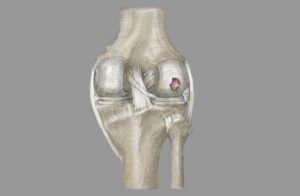The landscape of healthcare reimbursement is a complex web that connects patients, healthcare providers, and insurance companies. It plays a pivotal role in ensuring that medical services receive payment, but it also presents its fair share of challenges. Managing healthcare reimbursement issues is crucial for both patients and providers as it can significantly impact the quality of care and financial well-being. In this article, we will explore the intricacies of healthcare reimbursement, common issues faced, and effective strategies to manage them.
Common Healthcare Reimbursement Issues
Managing healthcare reimbursement involves addressing a range of common issues:
A. Denials and Claim Rejections: Overcoming the Roadblocks
Claim denials or rejections can occur for various reasons, including coding errors, missing information, and policy misalignment. These issues can result in delayed or lost payments and frustration for both patients and providers.
To effectively manage denials and rejections:
- Regularly review claims for accuracy and completeness before submission.
- Address any discrepancies or errors promptly.
- Establish a system for tracking and following up on denied or rejected claims, ensuring that they are resubmitted with the necessary corrections.
B. Billing and Coding Errors: The Importance of Precision
Accurate coding is crucial for claims to be processed correctly. Errors in coding can lead to claim rejections, denials, and underpayment.
To avoid coding errors:
- Ensure that your coding staff is well-trained and up-to-date with the latest coding guidelines.
- Regularly audit coding practices and provide feedback to correct any recurring issues.
- Consider using coding software that can help automate the process and reduce errors.
C. Pre-authorization and Prior-authorization Hurdles: Navigating Red Tape
Many medical procedures and services require pre-authorization from insurance providers, which can lead to delays in care and reimbursement. To navigate these hurdles:
- Educate both staff and patients about the necessity of pre-authorization and the specific procedures for obtaining it.
- Establish clear processes for obtaining pre-authorization, including streamlined communication with payers.
D. Payer Disputes and Delays: Resolving Challenges Effectively
Disagreements with payers and delays in reimbursement can strain a healthcare provider’s financial resources and affect their ability to provide care. To manage payer disputes and delays:
- Maintain open and proactive communication with payers. This can help address disputes and negotiate more effectively.
- Keep detailed records of communications and interactions with payers to track progress and provide a clear historical record in case of disputes.
Strategies for Managing Healthcare Reimbursement Issues
Managing healthcare reimbursement issues effectively requires a multi-pronged approach:
A. Proper Documentation and Coding
Accurate and detailed documentation is essential for healthcare reimbursement. This includes:
- Thoroughly document patient encounters and medical procedures, ensuring you record all relevant information.
- Ensuring that accurate ICD-10 and CPT codes are used to describe diagnoses and procedures.
- Utilizing Electronic Health Records (EHR) systems to streamline and standardize documentation, making it more accessible and manageable.
B. Timely and Effective Claim Submission
Submitting claims promptly and accurately is crucial for smooth reimbursement. Tips for success include:
- Familiarize staff with the claims submission process, ensuring they understand the importance of accuracy and timeliness.
- Utilize electronic claim submission methods to reduce errors and expedite the process. Electronic claims are typically processed faster and more accurately than paper claims.
C. Patient Advocacy and Education
Patients play a critical role in ensuring their claims are processed accurately:
- Patients should understand their insurance benefits, including coverage, deductibles, co-pays, and out-of-pocket costs.
- Encourage patients to dispute claim denials or errors, with the help of the healthcare provider if necessary. Being proactive in addressing discrepancies can lead to faster resolution.
D. Payer Relationship Management
Building positive relationships with payers can lead to smoother reimbursement processes:
- Maintain open and proactive communication with payers to foster a collaborative and cooperative relationship.
- Negotiate contracts and payment terms to ensure fair compensation for services rendered.
- Promptly address disputes and delays through effective communication and negotiation.
E. Technology and Automation
Leveraging technology can significantly improve reimbursement processes:
- Healthcare Revenue Cycle Management (RCM) software can streamline the entire reimbursement process, from patient registration to claims submission and follow-up.
- Automation can reduce errors and improve efficiency. Implementing automation for tasks like claims processing and appointment scheduling can free up staff time for more strategic activities.
Also Read:
The Three Pillars of Reimbursement
Effective healthcare reimbursement is built on three fundamental pillars:
- Coverage: The first pillar involves understanding the patient’s insurance coverage. Healthcare providers must take this crucial step to determine which services are covered and which ones require reimbursement. Coverage details can vary significantly between insurance plans, and medical professionals need to navigate these differences to ensure proper reimbursement.
- Coding and Documentation: The second pillar focuses on accurate coding and thorough documentation. Proper coding is essential for successful reimbursement. Healthcare providers must ensure they code services correctly, adhering to Current Procedural Terminology (CPT) and International Classification of Diseases (ICD) codes. Complete and precise documentation supports the coding process and provides a clear record of the services rendered.
- Claims Submission and Follow-up: The final pillar involves the submission of claims to insurance companies and diligent follow-up. Timely and accurate claim submission is crucial for prompt reimbursement. Moreover, following up on claims and resolving any denials or rejections is essential to maximize reimbursement.
Methods of Reimbursement
The method of reimbursement in healthcare can vary, but some common approaches include:
- Fee-for-Service (FFS): In this traditional model, healthcare providers receive a set fee for performing each service or procedure. However, this method is becoming less common due to its potential for overutilization and rising costs.
- Value-Based Reimbursement (VBR): VBR is gaining prominence as it shifts the focus from quantity to quality. Providers are incentivized based on patient outcomes and the quality of care delivered.
- Capitation: This method involves a fixed monthly fee paid to providers for each patient under their care, regardless of the number of services provided. It encourages preventive care and cost-effective practices.
- Bundled Payments: Providers receive a single payment for an entire episode of care, encouraging efficiency and cost control.
Current Trends Impacting Healthcare Reimbursement in the US
Several trends are currently shaping the landscape of healthcare reimbursement in the United States:
- Telehealth Expansion: The COVID-19 pandemic accelerated the adoption of telehealth, leading to changes in reimbursement policies. Ensuring that telehealth services are properly reimbursed is a growing concern.
- Value-Based Care: The shift toward value-based care models, which focus on patient outcomes, quality, and cost-effectiveness, continues to evolve, impacting reimbursement strategies.
- Regulatory Changes: Regular regulatory changes and updates significantly influence healthcare providers’ reimbursement, including modifications to the Medicare Access and CHIP Reauthorization Act (MACRA) and the Merit-Based Incentive Payment System (MIPS).
- Billing and Coding Updates: Changes in CPT and ICD codes and guidelines require healthcare professionals to stay updated to ensure accurate reimbursement.
Is HRA Taxable in California?
Health Reimbursement Arrangements (HRAs) are a popular employee benefit that allows individuals to use pre-tax dollars to cover eligible healthcare expenses. In California, HRAs generally do not incur taxes. However, the tax treatment of HRAs can vary based on several factors, including the type of HRA and its structure. It is advisable to consult a tax professional or the California Department of Tax and Fee Administration (CDTFA) for specific guidance on HRAs and their tax implications in the state.
Conclusion
Effectively managing healthcare reimbursement issues is paramount for the sustainability of healthcare providers and the well-being of patients. By addressing common issues through proper documentation, timely submission, patient advocacy, payer relationships, and technology utilization, healthcare organizations can navigate the reimbursement landscape successfully. Staying compliant with regulations and adapting to emerging trends will ensure long-term financial stability and quality patient care. With the right strategies and a commitment to continuous improvement, you can master this multifaceted challenge.









